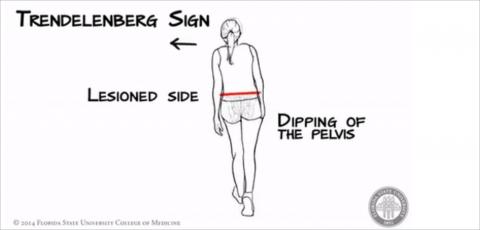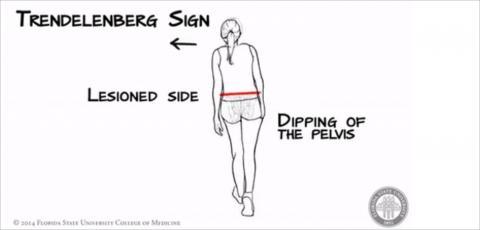Let me ask you a question; what do low back, hip and knee pain all have in common? Well, if you ask me, they can all be a pain in the butt….literally.
Often, we as osteopaths see patients who come in and have been told that they have “weak glutes” or a “weak core” and that’s why they suffer from aches and pains. So, what makes the glute muscles so special, and what do we mean by the “glutes” or “gluteal” muscles? To explain why this link exists, first we’re going to have to explain what the glutes are and what they do.
The gluteal muscles are made up of three main muscles; the gluteus maximus, gluteus medius, and gluteus minimus. Now, I’m sure many of you reading this know or have briefly heard about the glute max muscle. This is an incredibly powerful muscle that assists in explosive jump, squat and sprinting exercises. However, the other two muscles, the gluteus medius and minimus, are not often given the due recognition they deserve. They are known as hip abductor muscles because they help raise the leg sideways or….abduct the hip. Despite the boring and obvious title, these two muscles have a very important function during walking and running tasks. Their job is to make sure that the pelvis doesn’t dip too far down during walking and running activities, allowing the leg to swing through without your foot scraping or dragging along the ground.
So what happens if the gluteus med and min are weak? Well, with the aid of this clever GIF (technology is great sometimes), hopefully we can explain what is happening.
Notice in the image how the right side of the pelvis or hip drops much further than the left side. This is because the left hip abductor group is not strong enough to elevate the right pelvis high enough to a “normal” level. This is quite a confusing concept, but long story short the dropping of one side of the pelvis is due to weakness of the opposite sided hip abductor group. This is often referred to as “Trendelenburg gait” named after Dr Frederick Trendelenburg who developed a test to diagnose hip abductor weakness.
I can hear you all now scream “Hurry up and get to the point Luke! What does any of this have to do with my sore back/hip/knee??” It’s ok, we’re at that stage now, but hopefully that gives you a basic understanding of why the glutes are pretty important.
With respect to back pain, it is thought that that the muscles in the lower back attempt to compensate for the lack of glute strength during walking and elevate the pelvis to allow the leg to swing through. The problem with this is that the muscles of the low back weren’t designed to do this, so they get fatigued a lot quicker and that is what gives you the unpleasant experience. Studies have shown that by increasing hip abductor strength, participants were able to significantly lower their pain experiences.
Hip pain, especially around the side of the hip, can occur due to the continual stress placed on the glute tendons when trying to abduct the leg. Again, populations that experience this type of pain have been shown to have weaker hip abductor muscles than healthy populations, and strengthening these muscles can help alleviate pain symptoms. There is also a strong link between weak hip abductors and hip osteoarthritis, however it is unclear if the relationship is causal.
The link between hip abductor weakness and knee pain is a bit more complicated, and not 100% understood. However, the thought is that there are biomechanical compensations to allow for stronger activation of the gluteus medius muscle. This happens by the hip rotating inwards, and causes increased amounts of stress on the knee. This has previously been referred to as patella tracking syndrome, but now referred to as patellofemoral pain syndrome, which is both a mouthful and a topic for another blog.
Now it should go without saying that glute weakness isn’t the only reason for hip, back and knee pain. What this blog aimed to highlight was what can occur with weak hip abductors, but they aren’t the only reason that these conditions come about. I bet you’re wondering now what the role of manual therapy in these conditions is if strengthening has shown to greatly improve the symptoms. Manual therapy, such as osteopathy, has an important role for getting you started down the path of recovery. In my opinion, it’s not motivating at all to do any exercises when you’re still in pain. So the first step is to help alleviate the pain to get you more confident in doing these exercises.
At the time of this blog, we are in the grips of lockdown and COVID-19 pandemic, in which most gyms are shut down or heavily restricted. Does that mean that you can’t do any exercises at home to help strengthen your hip abductors? Not at all! There are plenty of exercises and strategies to utilise at home, and if you’re wondering how you should ask your friendly osteopath to help you out.
Written By Dr Luke McCarney


